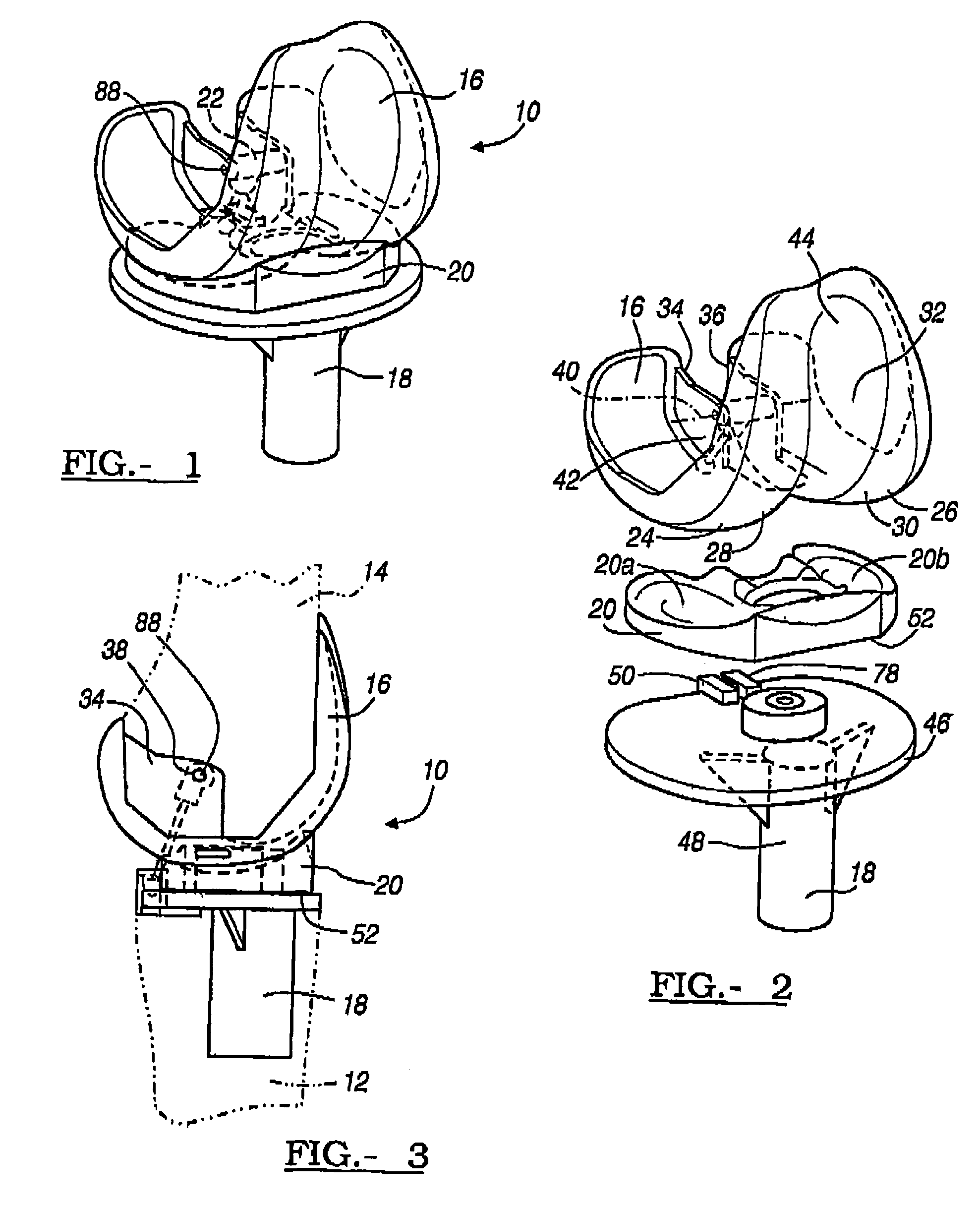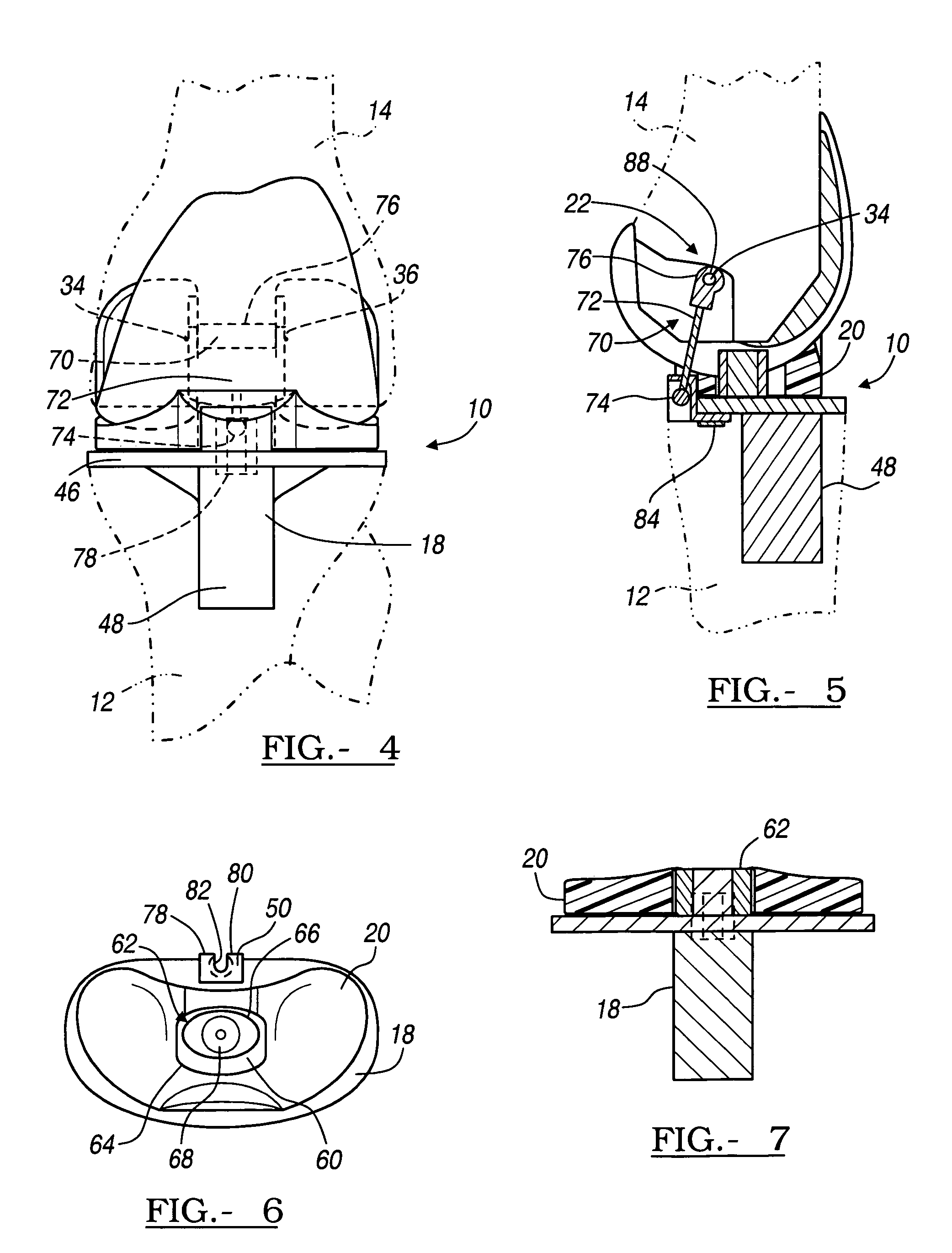Method and apparatus for mechanically reconstructing ligaments in a knee prosthesis
a knee joint and ligament technology, applied in the field of knee joint prosthesis, can solve the problems of increased contact stress between the femoral component and the bearing member, dislocation sometimes exhibiting drawbacks of fixed bearing knees, so as to achieve the effect of substantially reducing or eliminating the disadvantages of the currently available knee joint prosthesis
- Summary
- Abstract
- Description
- Claims
- Application Information
AI Technical Summary
Benefits of technology
Problems solved by technology
Method used
Image
Examples
first embodiment
[0026]Referring to FIGS. 1–8e, a knee joint prosthesis 10 is shown in accordance with the teachings of the present invention. The knee joint prosthesis 10 is generally designed to be used when the posterior cruciate ligament (PCL) is resected. However, it is appreciated that the present invention may be utilized in knee replacements where other ligaments such as the anterior cruciate ligament (ACL) or other soft tissues that support the knee joint are resected. The knee joint 10 is shown in FIGS. 3–5 as being secured to the tibia 12 and the femur 14 of a surgically resected left knee joint, with the tibia 12 and the femur 14 shown in phantom, and with the understanding that a suitable right knee may be similarly constructed. The knee joint prosthesis 10 includes a femoral component 16, a tibial component 18, a floating bearing 20 and a linkage mechanism 22 coupling the femoral component 16 to the tibial component 18 and acting as the PCL replacement.
[0027]The femoral component 16 is...
second embodiment
[0043]As shown in FIGS. 11–12, a linkage mechanism 90 for the prosthetic knee joint 10 having the floating bearing 20 is shown comprised of a bar 92 coupled to the femoral component 16 and to the tibial component 18. The bar 92 includes a first ball 94 attached to a first end and a second ball 96 attached to the second end. The bar 92 is shown to be formed of a rigid biocompatible metal such as cobalt-chromium-molybdenum alloy having suitable mechanical properties. However, it is contemplated that the bar 92 may be formed of various materials having varying mechanical properties or combinations of materials to optimize the performance of the knee joint prosthesis 10. For example, the bar 92 may be rigid, flexible, resilient and made from materials such as nylon, surgical steel or UHMWPE to provide the desired characteristics.
[0044]The first ball 94 end of the bar 92 is coupled to the tibial component 18 by a captured bore 98 that permits rotation and translation of the linkage mecha...
PUM
 Login to View More
Login to View More Abstract
Description
Claims
Application Information
 Login to View More
Login to View More - R&D
- Intellectual Property
- Life Sciences
- Materials
- Tech Scout
- Unparalleled Data Quality
- Higher Quality Content
- 60% Fewer Hallucinations
Browse by: Latest US Patents, China's latest patents, Technical Efficacy Thesaurus, Application Domain, Technology Topic, Popular Technical Reports.
© 2025 PatSnap. All rights reserved.Legal|Privacy policy|Modern Slavery Act Transparency Statement|Sitemap|About US| Contact US: help@patsnap.com



